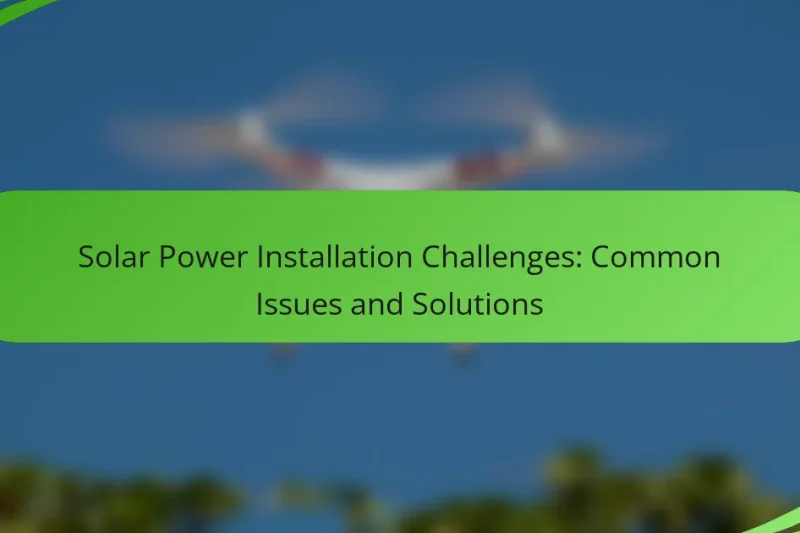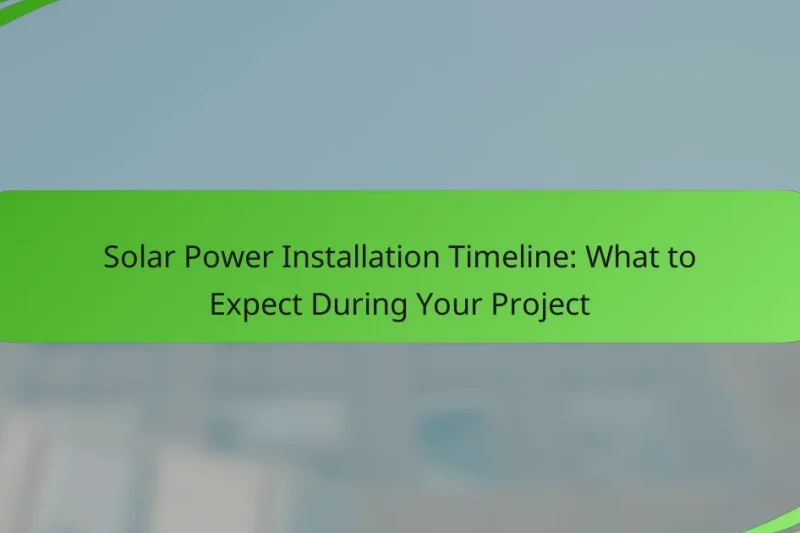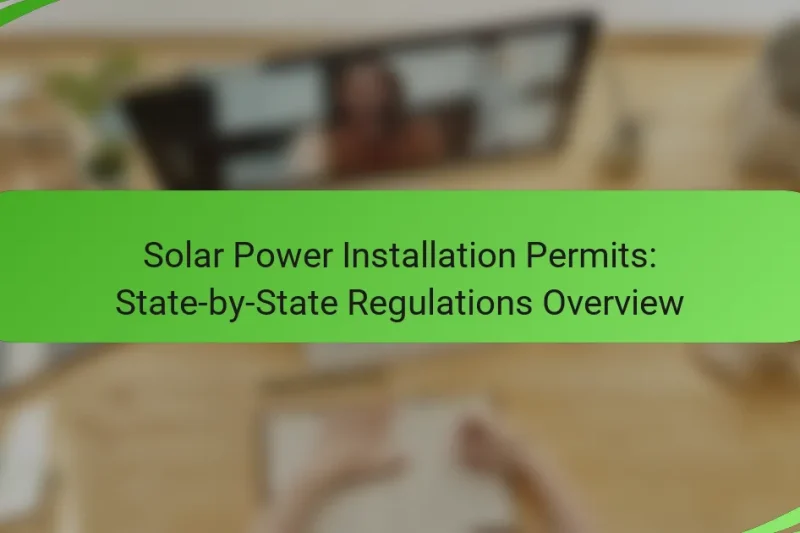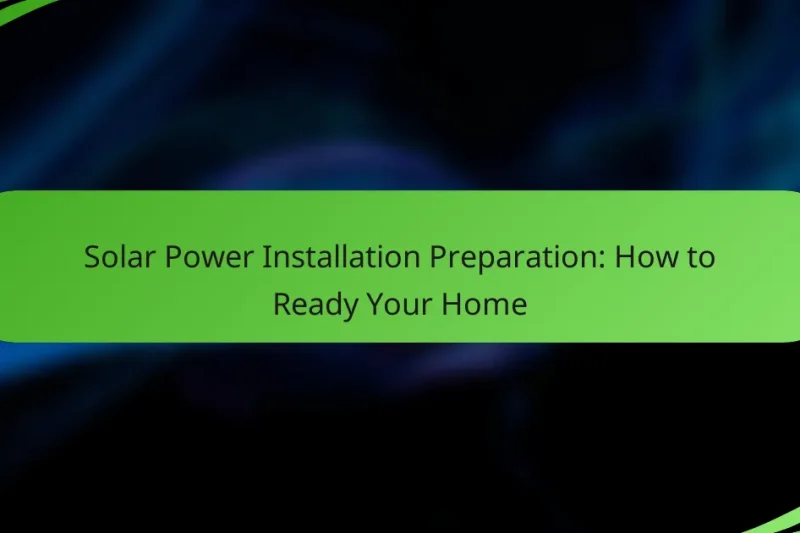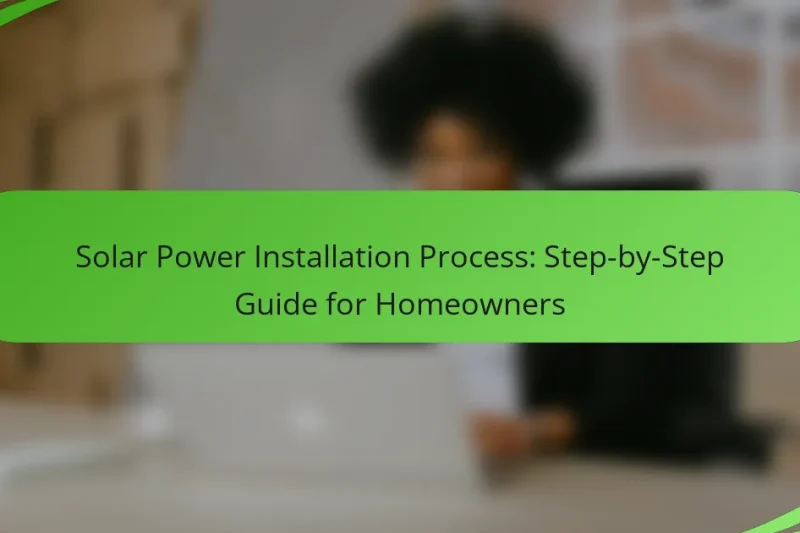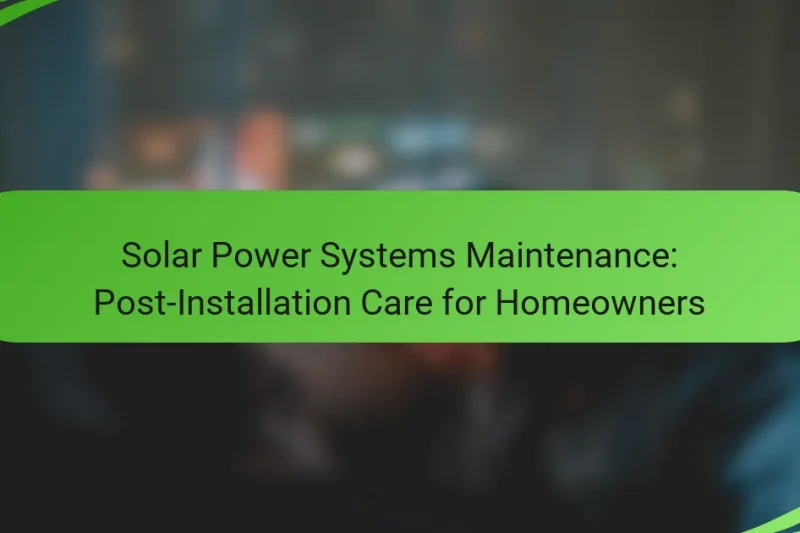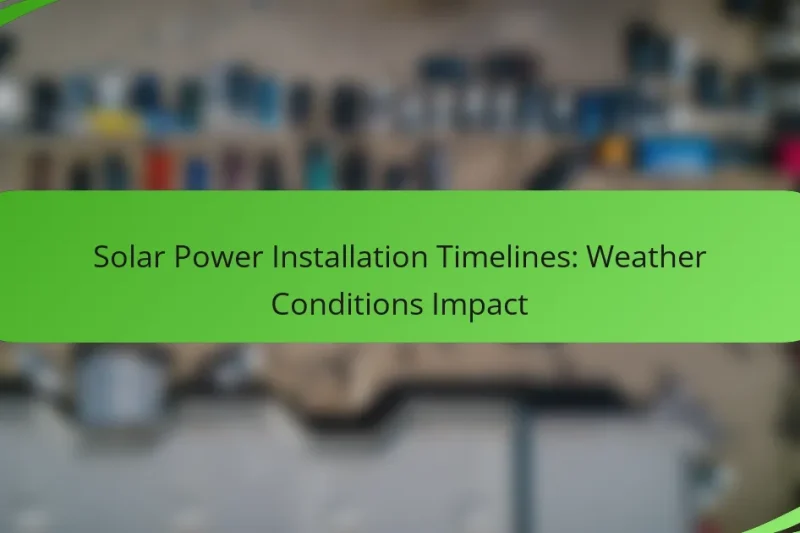Installing solar power systems presents unique challenges, particularly in urban settings where space is limited and … Solar Power Installation Challenges: Common Issues and SolutionsRead more
Solar Power Installation Process
The solar power installation process is a comprehensive series of steps designed to ensure an efficient and compliant setup. Key phases include site assessment, system design, permitting, installation, and inspection, each critical to the overall success of the solar power system. By understanding this process, homeowners can make informed decisions and enjoy the benefits of renewable energy.
Solar Power Installation Timeline: What to Expect During Your Project
Understanding the timeline for solar power installation is essential for homeowners looking to transition to renewable … Solar Power Installation Timeline: What to Expect During Your ProjectRead more
Solar Power Installation Permits: State-by-State Regulations Overview
Installing solar power systems involves navigating a complex landscape of state and local regulations that vary … Solar Power Installation Permits: State-by-State Regulations OverviewRead more
Solar Power Installation Preparation: How to Ready Your Home
Preparing your home for solar power installation is essential for maximizing efficiency and effectiveness. Key steps … Solar Power Installation Preparation: How to Ready Your HomeRead more
Solar Power Installation Process: Step-by-Step Guide for Homeowners
Installing solar power in your home is a multi-step process that requires careful planning and execution. … Solar Power Installation Process: Step-by-Step Guide for HomeownersRead more
Solar Power Systems Maintenance: Post-Installation Care for Homeowners
Proper maintenance of solar power systems is essential for homeowners to ensure optimal performance and longevity. … Solar Power Systems Maintenance: Post-Installation Care for HomeownersRead more
Solar Power Installation Timelines: Weather Conditions Impact
Weather conditions play a crucial role in determining the timelines for solar power installations, as they … Solar Power Installation Timelines: Weather Conditions ImpactRead more
What are the steps in the solar power installation process?
The solar power installation process involves several key steps that ensure a successful setup. These steps typically include site assessment, system design, permitting, installation, and inspection, each playing a crucial role in the overall efficiency and compliance of the solar power system.
Site assessment
The site assessment is the first step in the solar power installation process, where professionals evaluate the location for solar panel placement. Factors such as roof orientation, shading from trees or buildings, and structural integrity are considered to determine the system’s potential energy production.
During this phase, installers may use tools like solar pathfinders to analyze sunlight exposure throughout the year. This assessment helps in identifying the best configuration for maximizing energy generation.
System design
Once the site assessment is complete, the next step is system design, where the specifics of the solar power system are planned. This includes selecting the type and number of solar panels, inverters, and other components based on the energy needs of the property.
Designers will create a layout that optimizes space and efficiency while adhering to local regulations. They may also provide simulations to forecast energy production and savings, helping homeowners understand the financial benefits.
Permitting
Permitting is a critical step that involves obtaining the necessary approvals from local authorities before installation can begin. This process ensures that the solar power system complies with building codes and zoning regulations.
Homeowners should be prepared for this step to take time, as it often requires submitting detailed plans and may involve inspections. Engaging with experienced installers can help streamline the permitting process and avoid common delays.
Installation
The installation phase is where the solar panels and associated equipment are physically set up on the property. This process typically takes a few days to complete, depending on the system’s size and complexity.
During installation, professionals will mount the solar panels, connect the electrical components, and ensure everything is properly configured. It’s essential to follow safety protocols and manufacturer guidelines to ensure the system operates effectively.
Inspection
After installation, an inspection is conducted to verify that the solar power system meets all safety and regulatory standards. This step is crucial for ensuring the system is functioning correctly and is eligible for any available incentives or rebates.
Inspections may be performed by local authorities or third-party inspectors, and they will check for proper installation, electrical connections, and compliance with local codes. Passing this inspection is necessary before the system can be officially turned on and begin generating energy.
How much does solar power installation cost in the United States?
The cost of solar power installation in the United States typically ranges from $15,000 to $30,000 before any tax credits or incentives. Factors such as system size, location, and installation complexity can significantly influence the final price.
Average installation cost
The average cost for installing solar panels in the U.S. is approximately $3 to $5 per watt. For a standard 6 kW system, this translates to a total installation cost of around $18,000 to $30,000. Prices can vary based on regional market conditions and available incentives.
Cost breakdown by component
Solar installation costs can be divided into several key components: solar panels, inverters, mounting hardware, and installation labor. Typically, solar panels account for about 40-50% of the total cost, while inverters make up around 10-20%. Labor costs can vary widely, often representing 15-25% of the overall expense.
Solar Panels: 40-50% of total cost
Inverters: 10-20% of total cost
Mounting Hardware: 5-10% of total cost
Labor: 15-25% of total cost
Financing options
Homeowners have several financing options for solar power installation, including cash purchases, solar loans, and leases. Cash purchases provide the best long-term savings, while loans allow for lower upfront costs with monthly payments. Solar leases offer a way to use solar power without ownership, but may result in higher overall costs.
Additionally, many states and local governments offer incentives, rebates, or tax credits that can significantly reduce the net installation cost. It’s advisable to research available programs in your area to maximize savings.
What are the benefits of solar power installation?
Solar power installation offers numerous advantages, including significant energy savings, a positive environmental impact, and increased property value. By harnessing sunlight, homeowners can reduce their electricity bills, contribute to a cleaner planet, and enhance the worth of their property.
Energy savings
One of the primary benefits of solar power installation is the potential for substantial energy savings. Homeowners can significantly lower their monthly electricity bills by generating their own power. Depending on the size of the system and local energy rates, savings can range from 20% to 50% or more.
Additionally, many regions offer incentives, such as tax credits or rebates, which can further reduce the initial investment. It’s essential to evaluate local utility rates and available incentives to maximize savings.
Environmental impact
Solar power is a clean, renewable energy source that helps reduce greenhouse gas emissions. By switching to solar, homeowners contribute to decreasing reliance on fossil fuels, which are major contributors to climate change. This shift not only benefits the environment but also promotes sustainable energy practices.
Moreover, solar panels can significantly decrease a household’s carbon footprint. For instance, a typical residential solar system can offset several tons of carbon dioxide emissions annually, making a meaningful impact on local and global environmental health.
Increased property value
Installing solar panels can enhance a property’s market value. Homes equipped with solar energy systems often sell for more than comparable homes without solar. Studies suggest that properties with solar installations can see an increase in value by 3% to 4% or more, depending on the market.
Furthermore, potential buyers may be attracted to the prospect of lower energy bills and the environmental benefits associated with solar energy. This growing interest in sustainable living can make solar-equipped homes more appealing in competitive real estate markets.
What factors affect solar power installation timeframes?
Several factors can influence the time it takes to install solar power systems, including permitting processes, weather conditions, and the complexity of the system itself. Understanding these elements can help homeowners and businesses better plan their solar projects.
Permitting delays
Permitting delays can significantly extend the installation timeline for solar power systems. Local regulations often require various permits, which can take anywhere from a few days to several weeks to obtain, depending on the jurisdiction.
To minimize delays, it’s advisable to research local permitting requirements early in the planning process. Engaging with local authorities or hiring a knowledgeable installer can streamline this aspect and help avoid common pitfalls.
Weather conditions
Weather conditions play a crucial role in determining how quickly solar installations can proceed. Adverse weather such as heavy rain, snow, or extreme temperatures can halt work and delay project completion.
Planning installations during seasons with typically mild weather can reduce the risk of weather-related delays. It’s also wise to have contingency plans in place for unexpected weather events to keep the project on track.
System complexity
The complexity of the solar power system being installed can affect the timeframe as well. Systems that include battery storage or advanced monitoring technology may require more time for installation and integration compared to simpler setups.
When choosing a solar system, consider the trade-offs between complexity and installation time. A straightforward system may be quicker to install, while a more complex one could offer additional benefits but require a longer installation period.
How do I choose a solar power installation company?
Choosing a solar power installation company involves evaluating their experience, customer feedback, and service offerings. Prioritize companies with a solid track record and positive reviews to ensure a reliable installation process.
Reputation and reviews
Reputation is crucial when selecting a solar power installation company. Look for businesses with a strong presence in your community and a history of successful installations. Check online platforms like Google, Yelp, or specialized solar review sites to gather insights from previous customers.
Consider the overall rating and the number of reviews. A company with a high rating but few reviews may not provide a complete picture, while a company with many reviews and consistent positive feedback is likely to be more trustworthy. Pay attention to recurring themes in reviews, such as professionalism, timeliness, and post-installation support.
Additionally, ask for references from recent customers. Speaking directly with past clients can provide valuable information about their experiences and satisfaction levels. This firsthand feedback can help you make a more informed decision when choosing a solar installation provider.
